Mohammad was always on time. If there was a word in the English language of "pre-punctual", then it would describe our totally reliable guide. Despite several attempts to beat him to the hotel foyer for our daily tours, I think there was only one occasion where we managed to arrive before him.
Feeling rested and considerably happier after a good night's sleep in the very pleasant Ahvaz Pars Hotel, we met with Mohammad early for a short tour of Ahvaz city and then began our long trip south-west to Shiraz. Funny, when you are feeling a bit more positive it is amazing how good even an industrial city can look!
Ahvaz is the capital of the Khuzestan Province and boasts a population of some 1.4 million people. Situated on the banks of the Karun River and linked by rail, road, river and oil pipeline to the Persian Gulf, this largely industrial city maintains a strategic position as a major oil centre and transportation hub.
The city was built during the Sassanid Era around AD 230. Dams and irrigation systems were constructed and the city prospered. Later the city flourished as a centre for the cultivation of sugar cane and was also home to many well known Iranian scholars. Like so many cities, the bloody Mongol invasions of the 13th and 14th centuries devastated the city and Ahvaz declined to a mere village. The city later revived as an important Arab trading centre.
In the late 19th century under the Qajar rule, the city was linked by rail and began to prosper again as a commercial crossroad. The construction of the Suez Canal further stimulated trade via the Persian Gulf. In the early 1900's oil was found near Ahvaz and in 1926 the government of the Khuzestan Province moved from Shustar to Ahvaz city.
Ahvaz, with its close proximity to the Iraq border, suffered shockingly from Iraqi bombing raids during the Iran-Iraq war of 1980 to 1988. So many wars are about oil, and this one was no different. In 1980, Iraq's President Saddam Hussein attempted to annex the oil rich province of Khuzestan, claiming that it was a historic part of Iraq. With Iraq backed by the US and the USSR, the fighting over the next years was ferocious, using poison gas and trench warfare. At the end of this bloody, raging war, more than 500,000 people on each side were killed and about five million Iranians lost their homes. Around 1.2 million were forced to flee, many of them resettling as far away as Mashad.
In nearly every township and village we visited, it was impossible not to notice the endless, long lines of tall banners displaying the faces of the "martyrs", the thousands of local soldiers killed during the battles of the war. Mostly young and handsome, these fallen soldiers would have only been in their mid forties today. Their lifeless faces stared down on us; a sombre reminder of their hopelessly lost lives and the overall stupidity and futility of war.
Driving out of Ahvaz across the arid desert terrain, the scenery was dominated by burning oil sites and the accompanying stench of hydrogen sulphide. Sparse low desert vegetation with the occasional Eucalyptus tree (we were interested to observe that Iran has planted a huge number of the Australian native Eucalyptus species, known locally as "cedar") was punctuated by morose villages with their mess of mud brick dwellings and water tanks mounted on the roofs. Bal Lal, Bebbahan and Gachsaran became forgotten sad townships as we sped out of the Khuzestan Province and into the Fars.
We were heading to Shiraz via the ancient sites of Bishapur and Tangechogan. The landscape became dominated by fascinating, soaring rocky outcrops; the mesas and the buttes of the Fars Province. Pygmy trees clung tenuously to rocky slopes and the occasional goat and sheep herd foraged dry stunted vegetation.
On our way to Bishapur, Mohammad kept us amused by explaining some of the more curious Iranian customs, in particular that of "Ta'rof". This rather lovely social grace means that a person may politely turn down an offer such as food, payment, tip etc several times before agreeing to accept it. Apparently, the custom is meant to show utmost consideration and sensitivity to the other person's position and is a polite ritual where everyone has the chance to be on equal terms. Even though it seemed very confusing to us, we were very pleased that Mohammad explained Ta'rof to us. On several occasions when we went to pay for a some goods we were told in Farsi "It is nothing" which actually didn't mean "It is nothing" and eventually we managed to pay! Are you confused too?
We lunched at an open air restaurant under the shade of giant mulberry trees. Mohammad agreed that we didn't need heavy cooked lunches and so we dined lavishly on blood oranges, watermelon and Sohan, a famous Persian sweet resembling a buttery toffee brittle containing pistachios, cardamom, honey and saffron. It was seriously delicious and for me, quite addictive even though I do not normally have a sweet tooth. I have been making it ever since I arrived back home in Australia (see recipe below). The fruit and vegetables in Iran were fabulous. The delicious watermelons were a wonderful deep red, as were the great tasting tomatoes.
The ruins of Bishapur lie on the slopes of the Koohmareh Heights, some 23 kilometers west of the city of Kazarun and around 120 kilometers from Shiraz. According to an inscription, Bishapur - "Beautiful City of Shapur" was founded in AD 266 by Shapur, the second of the Sassanid kings. The remains of this fortified city are spread out across a few hectares and include the Palace of Shapur and Anahita's Temple, the largest structure which houses a stairwell that leads underground to a now dry pool around where the faithful once prayed (Anahita was the guardian angel of waters in the Zoroastrian religion).
The city was built by Roman soldiers who had been captured after the defeat of the Roman Emperor Valerian in AD 260. Along the river banks are a series of bas-reliefs commemorating the victory of the Shapur people over the Romans. About five kilometers away lies the archaeological site of Tangechogan Gorge and Cave of Shapur. The site contains a seven meter high statue of Shapur I.
It is said that Bishapur at its peak was once one of the most beautiful and richest cities in civilised world. In addition to enjoying military and strategic significance, its site was located on one of the main trade routes.
You really need an aerial view to appreciate the layout and extent of the Bishapur site, a lot of which is now destroyed. But the unique architecture of the ruins and the gorgeous reliefs were well worth seeing. We were especially taken with the beautiful reliefs of the Kings Bahram I and Bahram II. Interestingly the reliefs revealed a deep horizontal groove through their centres. It is said that this deep groove was the high water mark of a powerful flood that occurred during the 1960's. It looked however more like an aquifer to us.
Most of the Bishapur site was excavated from 1935 to 1941, and a lot of the city is thought to be still buried. Sadly, like so many Iranian sites, a lot of the excavated mosaic pieces have been transferred to overseas museums in France (The Louvre, Paris) and the US (Chicago Museum).
The nearby city of Kazerun lies on the road to Shiraz. A prosperous looking city with a population of some 90,000 people, it provides a base for the local agricultural industries of date palm and citrus orchards, wheat, rice, cotton and tobacco cropping, and viticulture. Here the countryside was rather lovely, with avenues of oleanders attractively set against a backdrop of pomegranates and date palm plantations. Farming was highly mechanised and we were relieved not to see the hard working donkeys that toiled the farms in the other parts of rural Iran we visited.
Further toward Shiraz city, the countryside changed again, revealing large pink-orange rocky outcrops, huge escarpments and fascinating geological formations. Rock splattered fields supported dwarf oak trees, none of which was more than three meters in height.
Shiraz, Mohammad said, is strategically located in a valley between two mountain ranges which means you cannot see it until you are are almost of top of it. And it was true. The city was huge and for some reason much larger than I had anticipated. The pleasant tree-lined Karim Khan-e Zand greeted our entry and our immediate impression was that of a fairly relaxed, yet sophisticated city.
Our room in the Pars Hotel faced west. It was poky and stiflingly hot and once again there was no air conditioning or cooling. We asked the woman staffing the reception desk if the hotel could provide electric fans. Well, no - it couldn't. But she did offer to change our room to one at the rear of the building which she insisted would be a lot cooler. A friendly, smartly dressed porter took us to the new room which was even hotter than the first. Dejected, we were about to agree to move when the porter looked at us curiously, waved his hands in a negative fashion and said "no, no - suite". Perplexed, we were hurried back to the reception where the now-not-at-all-friendly-woman tossed us the keys to what turned out to be a most luxurious two-room, two-bathroom suite. "Seeing you insisted" she snapped. We grinned to each other. Of course we had not insisted. We had not even asked. But it was about time our luck changed. And we were eternally grateful to our porter who we were more than pleased to tip. He refused several times. Ah yes, we remembered - Ta'rof! We insisted and he eventually accepted the tip. Thank you Mohammad!
In the early evening, Alan and I went for a walk from our hotel to a nearby market. We spent a very pleasant hour or so wandering around the bazaar, very much enjoying some time out from sightseeing and at long last being able to take a casual walk. On our way back along the main road to our hotel, we were approached by a slim, handsome young man who was desperately keen to talk with us. After some polite introductory remarks, the young university student burst into a tirade about the corruption within the Iranian government, the overpowering control of the mullahs and the treatment of women in his country. "Our women are not free - they are like caged animals! Why do Iranians have an international reputation of being terrorists? We are like every other ordinary people! We need help!" he exploded. We were concerned for this young man. In such an open thoroughfare he was being far too bold and we all knew it was dangerous behaviour. His sheer intensity and absolute frustration hit a raw nerve. He continued to walk with us, speaking loudly all the way about his anger with the government before hastily farewelling us outside our hotel. We wished him well. The open avenue of Karim Khan-e Zand was no place to pursue this sort of conversation.
Again, this was not the first time we had been approached by such desperately frustrated young local people. And again, nor was it the last. Time and time again we were to hear the same message: the hatred of the mullahs and the brutal government regime, and the confused frustration about the international reputation of Iran and the Iranian people. Given the recent political events in neighbouring Middle Eastern countries, we had no doubt that this country was a powder keg about to explode.
It certainly placed our concerns about our hotel room into perspective.
A Recipe for Sohan from Our Guide Mohammad
Ingredients
150 gm almonds or pistachio nuts
150 gm sugar
40 ml honey
100 ml water
80 ml vegetable oil or melted butter
Small tsp saffron
How to
Roast nuts lightly and rub skins off pistachios, if using.
Mix sugar, honey, oil or butter and water and cook over high heat until golden brown. Mix in nuts and stir over heat for two minutes. Dissolve saffron in 5 ml hot water and add it o the mixture. Watch for splattering – this mixture becomes like Napalm.
Pour into an oiled shallow dish and cool. Break into pieces.
"Have delicious sweet!" says Mohammad
Iran-Iraq War Martyrs: Flying the Fallen
Saturday, April 23, 2011
 Shiraz, Fārs, Iran
Shiraz, Fārs, Iran
Other Entries
-
1Introduction
Apr 1013 days prior Crowdy Head, Australiaphoto_camera0videocam 0comment 0
Crowdy Head, Australiaphoto_camera0videocam 0comment 0 -
2HISTORICAL TIMELINE
Apr 1112 days prior Crowdy Head, Australiaphoto_camera1videocam 0comment 0
Crowdy Head, Australiaphoto_camera1videocam 0comment 0 -
3Bon Voyage - or the Last Supper?
Apr 1112 days prior Crowdy Head, Australiaphoto_camera1videocam 0comment 0
Crowdy Head, Australiaphoto_camera1videocam 0comment 0 -
4Pssst - Most People in Western China are Muslim...
Apr 1112 days prior Sydney, Australiaphoto_camera3videocam 0comment 0
Sydney, Australiaphoto_camera3videocam 0comment 0 -
5Just a Fleeting Stay in Shanghai
Apr 1211 days prior Shanghai, Chinaphoto_camera2videocam 0comment 0
Shanghai, Chinaphoto_camera2videocam 0comment 0 -
6Back
Apr 1310 days prior Urumqi, Chinaphoto_camera4videocam 0comment 0
Urumqi, Chinaphoto_camera4videocam 0comment 0 -
7Everything is Grand and White in Ashgabat
Apr 149 days prior Ashgabat, Turkmenistanphoto_camera18videocam 0comment 0
Ashgabat, Turkmenistanphoto_camera18videocam 0comment 0 -
8Ancient Gonur - Good Morning Mr Sarianidi!
Apr 176 days prior Mary, Turkmenistanphoto_camera12videocam 0comment 0
Mary, Turkmenistanphoto_camera12videocam 0comment 0 -
9Stumbling Over the Border and Into Iran
Apr 185 days prior Mashad, Iranphoto_camera2videocam 0comment 0
Mashad, Iranphoto_camera2videocam 0comment 0 -
10Mashad - Our Confronting Introduction to Iran
Apr 185 days prior Mashad, Iranphoto_camera9videocam 0comment 0
Mashad, Iranphoto_camera9videocam 0comment 0 -
11Around Mashad - Mausoleums of Two Literary Giants
Apr 194 days prior Tehran, Iranphoto_camera7videocam 0comment 0
Tehran, Iranphoto_camera7videocam 0comment 0 -
12Tehran to Hamadan - So Dizi My Head is Spinning...
Apr 203 days prior Hamadan, Iranphoto_camera8videocam 0comment 0
Hamadan, Iranphoto_camera8videocam 0comment 0 -
13To Khorramabad: Connecting With the Archaemenids
Apr 212 days prior Khorramabad, Iranphoto_camera11videocam 0comment 0
Khorramabad, Iranphoto_camera11videocam 0comment 0 -
14"If You Were Israeli - I Cut Your Throat!"
Apr 221 day prior Ahvaz, Iranphoto_camera7videocam 0comment 0
Ahvaz, Iranphoto_camera7videocam 0comment 0 -
15Iran-Iraq War Martyrs: Flying the Fallen
Apr 23 Shiraz, Iranphoto_camera8videocam 0comment 0
Shiraz, Iranphoto_camera8videocam 0comment 0 -
16Perceptions of Persepolis: Grandeur of the Ruins
Apr 241 day later Shiraz, Iranphoto_camera8videocam 0comment 0
Shiraz, Iranphoto_camera8videocam 0comment 0 -
17Photo Gallery of Persepolis and Naqsh-E Rostam
Apr 241 day later Shiraz, Iranphoto_camera16videocam 0comment 0
Shiraz, Iranphoto_camera16videocam 0comment 0 -
18Today: The First Day of the Remainder of Your Life
Apr 252 days later Kerman, Iranphoto_camera16videocam 0comment 0
Kerman, Iranphoto_camera16videocam 0comment 0 -
19Yazd - Such a Lovely Place, Such a Lovely Place...
Apr 274 days later Yazd, Iranphoto_camera14videocam 0comment 0
Yazd, Iranphoto_camera14videocam 0comment 0 -
20Toward Esfahan - "The Jewel of Ancient Persia"
Apr 285 days later Esfahan, Iranphoto_camera34videocam 0comment 0
Esfahan, Iranphoto_camera34videocam 0comment 0 -
21A Gorgeous Carpet, Jolfa and Fascinating Abyaneh
Apr 307 days later Abyaneh, Iranphoto_camera9videocam 0comment 0
Abyaneh, Iranphoto_camera9videocam 0comment 0 -
22Photo Gallery of Abyaneh Village
Apr 307 days later Abyaneh, Iranphoto_camera13videocam 0comment 0
Abyaneh, Iranphoto_camera13videocam 0comment 0 -
23Destination Tehran - Reflections on our Travels
May 018 days later Tehran, Iranphoto_camera13videocam 0comment 0
Tehran, Iranphoto_camera13videocam 0comment 0 -
24Osama bin Laden Dead - Our Travel Plans in Chaos
May 029 days later Dubai, United Arab Emirates, United Arab Emiratesphoto_camera11videocam 0comment 0
Dubai, United Arab Emirates, United Arab Emiratesphoto_camera11videocam 0comment 0 -
25For Better or For Worse - We Head off to Islamabad
May 0310 days later Islamabad, Pakistanphoto_camera4videocam 0comment 0
Islamabad, Pakistanphoto_camera4videocam 0comment 0 -
26Eclectic Chitral - North West Frontier Province
May 0411 days later Chitral, Pakistanphoto_camera14videocam 0comment 0
Chitral, Pakistanphoto_camera14videocam 0comment 0 -
27The Wonderful Faces of Chitral Town
May 0411 days later Chitral, Pakistanphoto_camera8videocam 0comment 0
Chitral, Pakistanphoto_camera8videocam 0comment 0 -
28A Four-Seater Jeep, Six People & Two Kalashnikovs
May 0512 days later Bomburet, Pakistanphoto_camera15videocam 0comment 1
Bomburet, Pakistanphoto_camera15videocam 0comment 1 -
29Love Affair with Rumbur, A Sick Jeep Trip to Buni
May 0613 days later Buni, Pakistanphoto_camera9videocam 0comment 0
Buni, Pakistanphoto_camera9videocam 0comment 0 -
30Insight into the Life of the Lost Kalasha People
May 0613 days later Buni, Pakistanphoto_camera8videocam 0comment 3
Buni, Pakistanphoto_camera8videocam 0comment 3 -
31More Photos of the Kalasha Peoples
May 0613 days later Buni, Pakistanphoto_camera14videocam 0comment 0
Buni, Pakistanphoto_camera14videocam 0comment 0 -
32Tandoori Chicken, Potatoes & Eggs at Shandur Pass
May 0714 days later Gupis, Pakistanphoto_camera23videocam 0comment 0
Gupis, Pakistanphoto_camera23videocam 0comment 0 -
33You Want More.....? Are You Sure.....?
May 0815 days later Gilgit, Pakistanphoto_camera14videocam 0comment 1
Gilgit, Pakistanphoto_camera14videocam 0comment 1

 Shiraz, Fārs, Iran
Shiraz, Fārs, Iran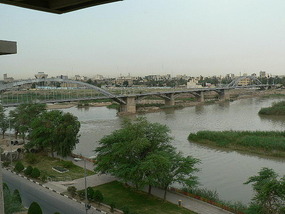
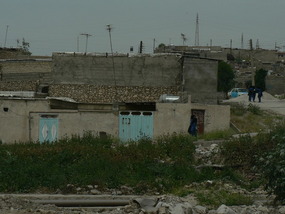
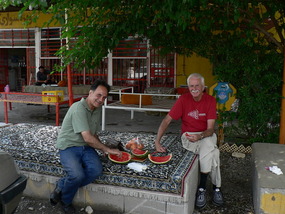
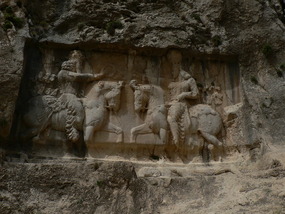

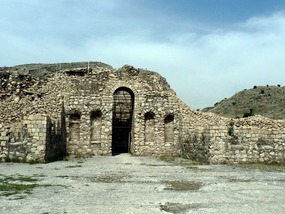

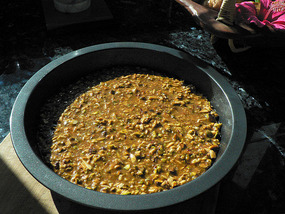






2025-05-22